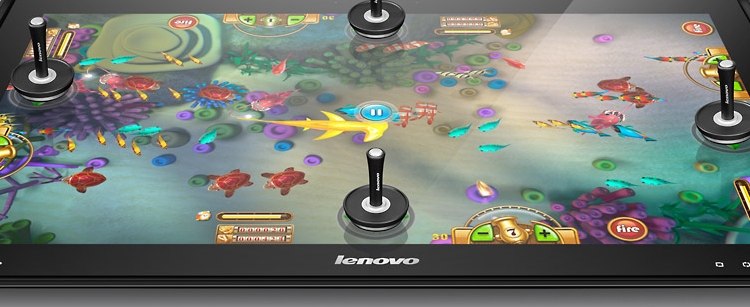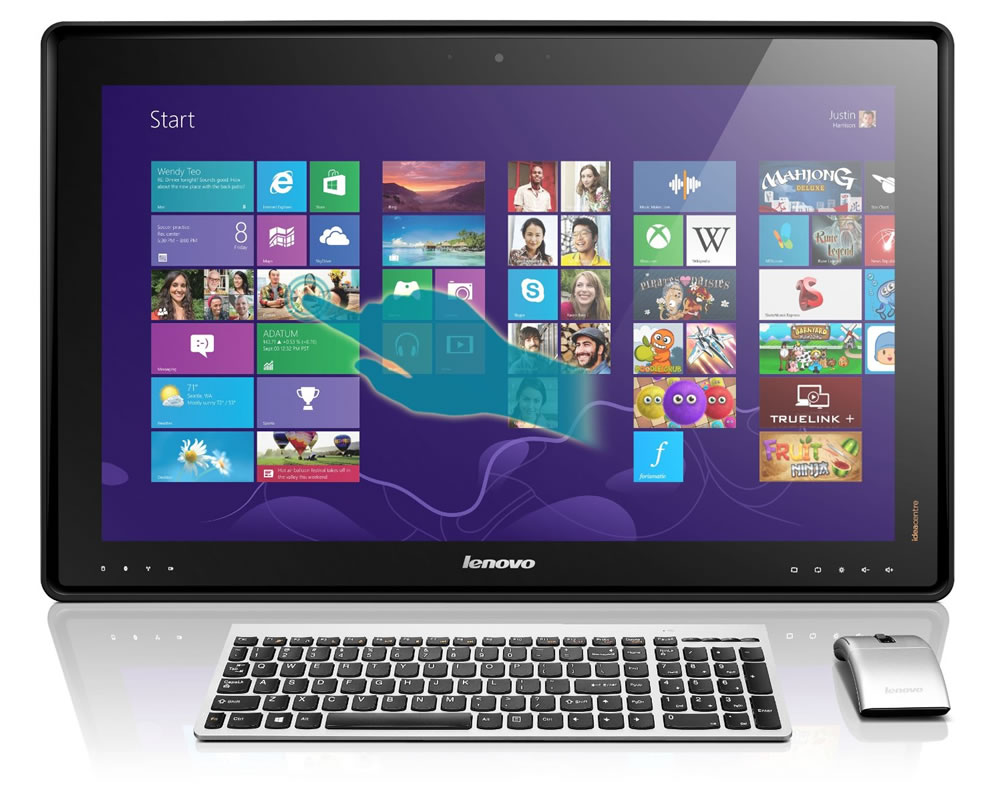With all of the attention that tablets, ultrabooks and hybrids have received following the release of Windows 8, you'd be forgiven to let slip from memory an entirely different class of computer that has a lot to gain from Microsoft's new touch-enabled operating system: the all-in-one.
These machines were originally marketed as space-saving computers for areas with limited real estate like a college dorm room or a compact office. As we inched closer to Windows 8, however, several manufacturers jumped the gun and released touch-based all-in-ones running Windows 7 - an operating system that was released four years before the iPad and the onslaught of touch-enabled devices.
Pre-Windows 8 touch-based systems did work in the sense of the word, but they weren't very practical, often shipping with an alternative user interface to justify the use of touch. Simply put, the hardware and technology was there but the software was still a generation or two behind.
This came to change with Windows 8 and the Metro interface, so with the evolution of Windows also came the evolution of the all-in-one, at least according to Lenovo. The company's IdeaCentre Horizon Table PC fully embraces Windows 8's touch capabilities with a social twist - it moonlights as a Microsoft Surface (the table, not the tablet) that can be used by the entire family for a "fun night in" as Lenovo describes it.
Lenovo IdeaCentre Horizon 27-Inch - $1,350
- 27-inch LED 10-point multitouch display
(1,920 x 1,080) - Intel Core i5 3337U
(1.8 - 2.7GHz, dual-core Ivy Bridge) - Intel HD Graphics 4000
- Nvidia GeForce GT 620M
- 6GB DDR3
- Windows 8 64-bit
- 1TB 5400 RPM HDD
- 802.11 b/g/n Wi-Fi, Bluetooth 4.0
- Integrated 720p HD Camera
- HDMI in, 2x USB 3.0, 6-in-1 card reader
- 3.5mm audio in, mic jack, stereo speakers
- 8-cell lithium-polymer battery (~2 hrs)
- 16.90 x 27.20 x 1.17 inches
- 17.8 pounds
Our 27-inch review unit arrived with Intel's third generation Core i5-3337U processor clocked at 1.8GHz, 8GB of DDR3 memory, Nvidia GeForce GT 620M graphics with 2GB of memory, a 1TB 5400 RPM hard drive, Broadcom 802.11 b/g/n Wi-Fi, an 8-cell lithium-polymer battery and Bluetooth 4.0.
All variants of the Horizon Table PC ship with Windows 8 64-bit, an array of touch-oriented gaming accessories, and a wireless keyboard and mouse.
The Table PC is a bit different in design than traditional all-in-ones in that it doesn't include a stand or a base. Instead, the machine looks more like an oversized picture frame as it relies on a single spring-loaded support bar on the rear to prop it up for desktop use. This design puts the display front and center and looks a bit more pleasing than having a clunky base to contend with.
The 10-point multi-touch LED display measures 27 inches diagonally and operates at a resolution of 1,920 x 1,080 (16:9 widescreen). There's a sizable black bezel around the display and a rubber bezel around the outer edge. Across the bottom left side of the bezel is the system notification bar with hard drive activity light, Bluetooth indicator, Wi-Fi indicator and battery status LED. On the opposite side are touch-sensitive controls for screen orientation, display brightness and volume control. A 720p webcam is positioned just above the display, flanked by two microphones.
The system's power button is found on the left edge of the machine, conveniently placed out of sight but not out of reach. The back of the Table PC is home to the typical certification stickers and whatnot, as well as the spring-loaded stand, four rubber feet that are used when the system is laid flat in "share mode" and a set of stereo speakers with Dolby Home Theatre V4.
All of the I/O ports are found on the right side of the system. From top to bottom, we have a microphone jack, headphone jack, 6-in-1 card reader (SD, SDHC,SDXC,MMC, MS, MS-Pro), two USB 3.0 ports, HDMI-in and the DC power in jack. With the HDMI-in port, you can use the PC's display with a game console or as your primary television in conjunction with a cable or satellite set-top box.
Unlike some of the other all-in-ones we've taken a look at, this machine doesn't include an optical drive. This is a trend we're seeing more and more as digital downloads are now the most popular method to acquire software.
As was the case with other all-in-ones I've worked with, Lenovo's Table PC is extremely easy to get set up and running. The included wireless keyboard and mouse connect to the computer using a single USB dongle although with only two total USB ports, using those two peripherals limits you to a single free slot.
That's likely to present a problem as it did with me when I needed to connect my external optical drive to install Far Cry 2. As the optical drive requires two USB ports, I had to unplug the USB dongle for the keyboard and mouse and use the system's touch interface to install the game. Had this not been a touch-enabled PC, things would have been a bit trickier.
Additionally, you'll likely grow tired of using the included input accessories and want to replace them with something a bit more comfortable and of higher quality. They get the job done but neither is especially enjoyable to use for any length of time. Of course, swapping to an aftermarket keyboard and mouse means you'll eat up all of the USB ports on the machine. An included USB hub would have been a nice addition, but as you'll find out this is not the only sore spot we found with the IdeaCentre Horizon's hardware configuration.




